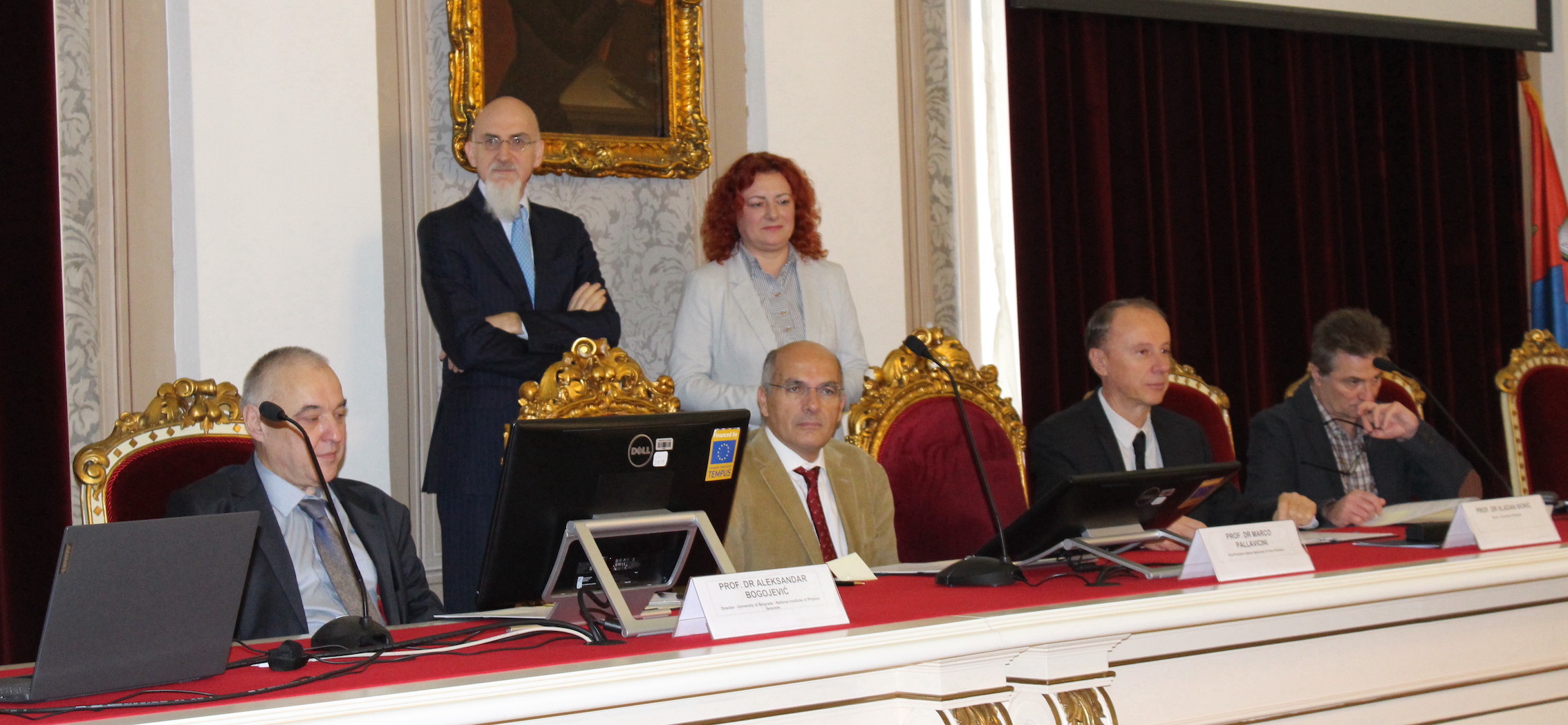 On 1st December, at the rector’s office of the University of Belgrade, as part of the event: Future challenges of physics – New opportunities for cooperation in science between Italy and Serbia, the official signing ceremony for new collaboration agreements between INFN and Serbian scientific institutions was held. The vice-president of INFN Marco Pallavicini, the rector of the University of Belgrade Vladan Djokić, the director of the physics department Ivan Belča, and the director of the Institute of Physics Belgrade Aleksandar Bogojević signed the five-year framework agreement between INFN and the University of Belgrade and two implementing agreements. The first of these agreements is with the Faculty of Physics for launching a collaboration in the areas of astroparticle physics, the physics of underground laboratories, and gravitational wave technologies; the second is with the Institute of Physics Belgrade for launching a collaboration in the areas of high-performance computing (HPC), quantum technologies, and artificial intelligence. The goal of the new agreements is to lay the foundations for strengthening and broadening the fruitful collaboration in basic and interdisciplinary research, uniting the strengths of the Italian and Serbian institutions to deal with future scientific challenges.
On 1st December, at the rector’s office of the University of Belgrade, as part of the event: Future challenges of physics – New opportunities for cooperation in science between Italy and Serbia, the official signing ceremony for new collaboration agreements between INFN and Serbian scientific institutions was held. The vice-president of INFN Marco Pallavicini, the rector of the University of Belgrade Vladan Djokić, the director of the physics department Ivan Belča, and the director of the Institute of Physics Belgrade Aleksandar Bogojević signed the five-year framework agreement between INFN and the University of Belgrade and two implementing agreements. The first of these agreements is with the Faculty of Physics for launching a collaboration in the areas of astroparticle physics, the physics of underground laboratories, and gravitational wave technologies; the second is with the Institute of Physics Belgrade for launching a collaboration in the areas of high-performance computing (HPC), quantum technologies, and artificial intelligence. The goal of the new agreements is to lay the foundations for strengthening and broadening the fruitful collaboration in basic and interdisciplinary research, uniting the strengths of the Italian and Serbian institutions to deal with future scientific challenges.





